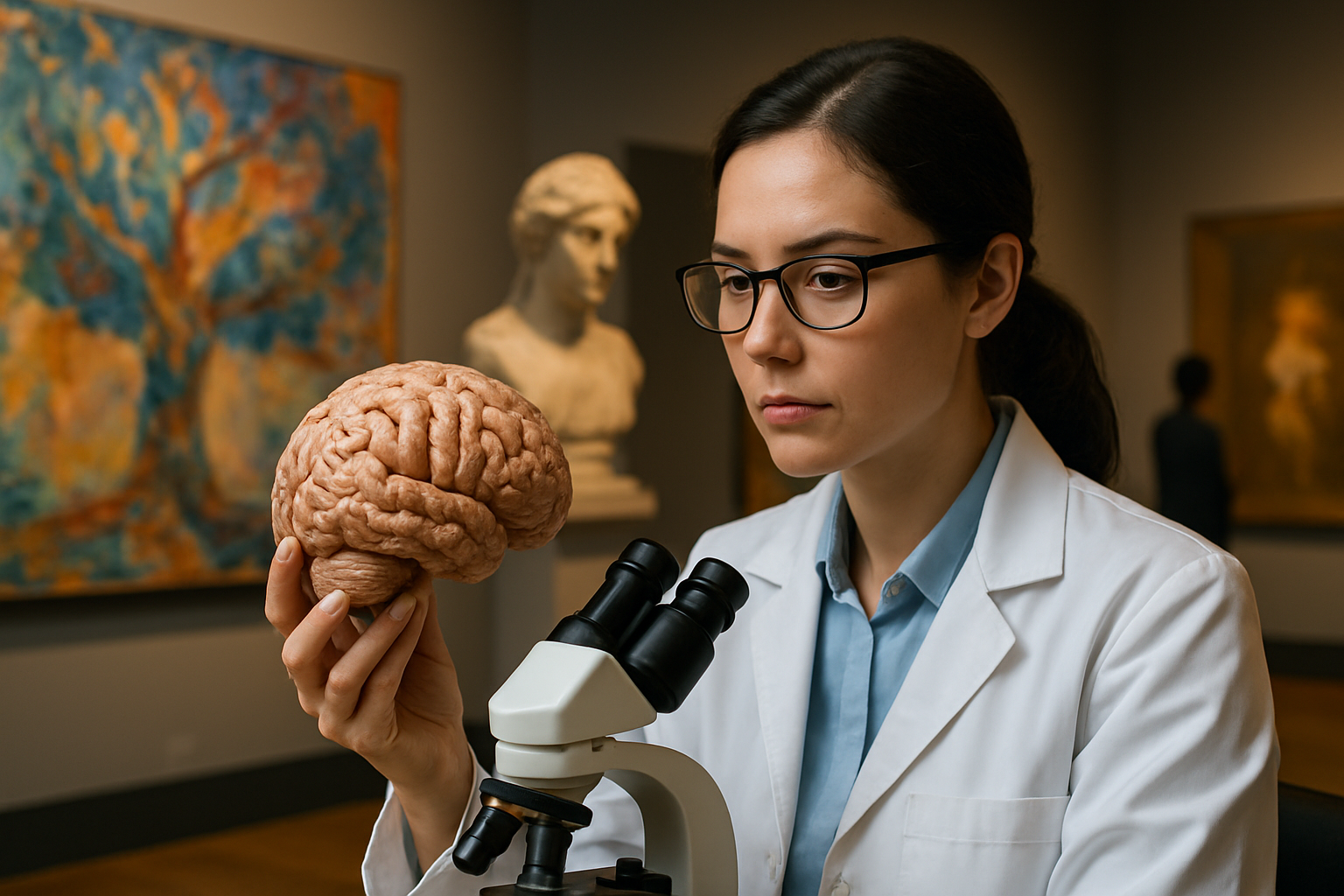Neuroaesthetics: Bridging Art and Brain Science
The intersection of neuroscience and art appreciation is reshaping our understanding of human creativity and perception. Neuroaesthetics, an emerging field, explores how our brains process and respond to artistic stimuli, offering fresh insights into the nature of beauty, creativity, and human experience. Read below to delve into this fascinating fusion of science and art.

The Neural Basis of Aesthetic Experience
At the core of neuroaesthetics is the idea that our aesthetic experiences are rooted in specific neural processes. Studies have shown that when we encounter art, multiple brain regions are activated, including those associated with visual processing, emotion, and reward. The prefrontal cortex, involved in decision-making and judgment, plays a crucial role in evaluating artistic merit. Meanwhile, the limbic system, responsible for emotional processing, contributes to the feelings of pleasure or discomfort we may experience when viewing art.
Cultural Influences on Aesthetic Perception
While neuroaesthetics focuses on biological processes, it also acknowledges the significant role of culture in shaping aesthetic preferences. Research has demonstrated that cultural background can influence how individuals perceive and appreciate art. For instance, studies comparing Western and East Asian participants have found differences in aesthetic judgments and neural responses to various art forms. This interplay between biology and culture highlights the complex nature of artistic appreciation and challenges simplistic notions of universal beauty standards.
Implications for Art Education and Therapy
The insights gained from neuroaesthetics have far-reaching implications for art education and therapy. Understanding how the brain processes art can inform teaching methods, helping educators develop more effective strategies for fostering creativity and appreciation. In therapeutic contexts, art-based interventions guided by neuroaesthetic principles show promise in treating various neurological and psychiatric conditions. From stroke rehabilitation to managing depression, art therapy informed by brain science offers new avenues for healing and personal growth.
Critiques and Controversies
Despite its potential, neuroaesthetics has faced criticism from both scientists and art theorists. Some argue that reducing aesthetic experiences to neural activity oversimplifies the complex and subjective nature of art appreciation. Critics contend that this approach may neglect the historical, social, and personal contexts that shape artistic experiences. Additionally, there are concerns about the limitations of current neuroimaging techniques in capturing the full spectrum of aesthetic responses. These debates underscore the need for interdisciplinary dialogue and refined research methodologies as the field continues to evolve.
The Future of Neuroaesthetics
As technology advances and our understanding of the brain deepens, neuroaesthetics is poised to offer even more profound insights into the nature of creativity and perception. Future research may explore the neural basis of artistic genius, the evolution of aesthetic preferences, and the potential for enhancing creative abilities through targeted brain stimulation. By bridging the gap between science and art, neuroaesthetics promises to enrich both fields, offering a more comprehensive understanding of human experience and expression.
In conclusion, neuroaesthetics represents a fascinating frontier in the study of human cognition and creativity. By exploring the neural underpinnings of artistic experiences, this field challenges us to reconsider our assumptions about beauty, creativity, and the nature of aesthetic appreciation. As research progresses, neuroaesthetics may not only deepen our understanding of art but also provide valuable insights into the workings of the human mind, offering new perspectives on consciousness, emotion, and the essence of human experience.





